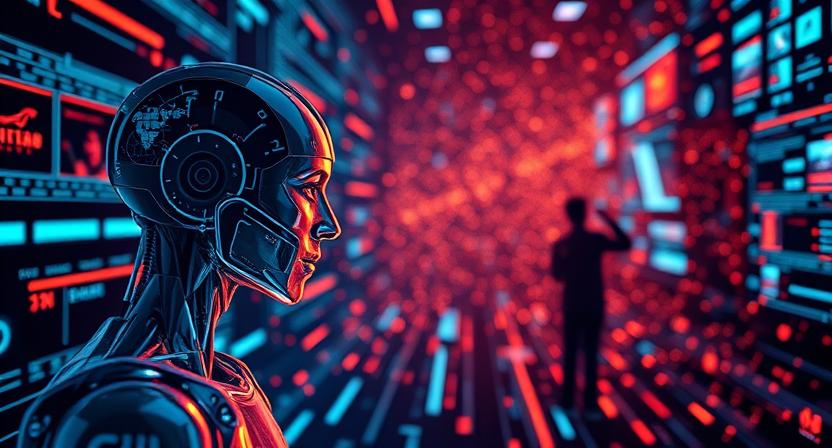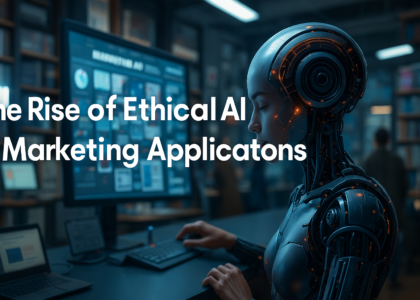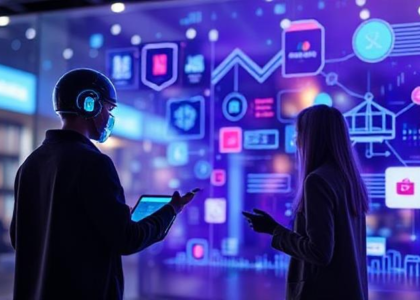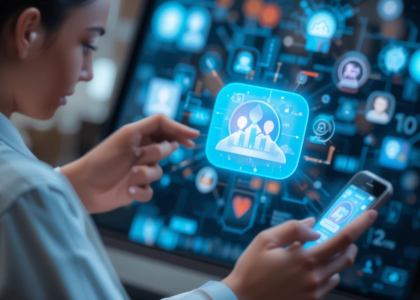The rise of AI-generated content has revolutionized industries, from marketing and journalism to entertainment and education. AI-powered tools can create written content, generate visual art, and even compose music in a matter of seconds. While these advancements offer efficiency and scalability, they also raise concerns about originality, authenticity, and the role of human creativity.
To harness the power of AI while preserving creative expression, it is essential to strike the right balance between automation and human ingenuity. This article explores the strengths and limitations of AI-generated content, the irreplaceable value of human creativity, and best practices for integrating both to achieve optimal results.
Understanding AI-Generated Content
AI-generated content refers to text, images, audio, and video created with the help of artificial intelligence. These tools rely on machine learning algorithms and natural language processing (NLP) to analyze patterns and generate content that mimics human output.
Examples of AI Tools Used for Content Creation
- Text Generation: OpenAI’s ChatGPT, Jasper AI, Copy.ai
- Image Generation: DALL·E, MidJourney, Deep Dream
- Music & Audio: AIVA, Amper Music, Soundraw
- Video & Animation: Synthesia, Runway ML, DeepBrain AI
Benefits of AI in Content Production
- Speed & Efficiency: AI can generate large volumes of content in minutes.
- Cost-Effectiveness: Reduces the need for extensive human labor.
- Data-Driven Insights: AI analyzes trends and optimizes content for engagement.
- Multilingual Capabilities: AI tools can translate and create content in multiple languages.
While these advantages are impressive, they cannot replace the human element of creativity.
The Strengths of Human Creativity
AI is a powerful tool, but it lacks the emotional intelligence, personal experiences, and nuanced understanding that define human creativity.
Emotional Intelligence & Storytelling
Humans can evoke emotions, connect with audiences, and create compelling narratives that resonate on a deeper level. AI-generated content, while coherent, often lacks the emotional depth necessary for storytelling.
Authenticity & Originality
Originality stems from human experiences, perspectives, and cultural insights. AI works by repurposing existing data, which means it struggles to produce content that is genuinely unique.
Cultural & Ethical Considerations
Creativity is influenced by culture, ethics, and societal norms. Humans can navigate these complexities better than AI, ensuring content aligns with values and sensitivities.

The Challenges of AI-Generated Content
Despite its advantages, AI-generated content presents several challenges that must be addressed.
Risk of Generic & Repetitive Content
AI models rely on existing data, which means their outputs can become formulaic, lacking originality or personal touch.
Ethical Concerns
AI-generated content raises ethical issues, including:
- Plagiarism: AI may inadvertently replicate existing content without proper attribution.
- Bias & Misinformation: AI models learn from vast datasets, which may include biased or incorrect information.
- Job Displacement: Increased reliance on AI may impact creative professionals.
Lack of Emotional Depth
AI can generate grammatically correct and logically structured content, but it cannot replicate the emotional intelligence that humans bring to storytelling and communication.

The Ideal Balance: Combining AI and Human Creativity
Rather than viewing AI as a replacement, it should be seen as a complementary tool that enhances human creativity.
AI as an Assistant, Not a Replacement
- AI can handle repetitive tasks like data analysis, summarization, and content ideation.
- Humans can focus on higher-level creative processes, such as storytelling, brand voice, and audience engagement.
Enhancing Content with Human Touch
- Use AI to generate drafts, but refine them with human insights.
- Add personal anecdotes, emotions, and creativity to AI-generated content.
- Ensure content aligns with brand identity and audience expectations.
Case Studies of Successful AI-Human Collaboration
- Journalism: Media outlets like The Washington Post use AI to generate reports, but human journalists refine and add context.
- Marketing: AI helps brands personalize content, but human marketers craft compelling stories.
- Art & Design: AI-generated images are used as creative inspiration, but human artists finalize the work.

Best Practices for Integrating AI in Content Creation
To successfully blend AI with human creativity, follow these best practices:
1. Set Content Guidelines & Quality Checks
- Establish editorial guidelines to maintain consistency.
- Have humans review and refine AI-generated content.
2. Ensure Ethical AI Usage
- Use AI responsibly to avoid plagiarism and bias.
- Verify information generated by AI to prevent misinformation.
3. Use AI for Research & Efficiency
- AI can assist in keyword research, topic generation, and trend analysis.
- Writers can focus on adding originality and engagement.

Future of AI and Human Creativity in Content Creation
As AI continues to evolve, its role in content creation will expand. However, human creativity will remain irreplaceable.
Predictions for AI Advancements
- More sophisticated AI models with better contextual understanding.
- Improved AI-human collaboration tools for content refinement.
- Enhanced AI-generated content with greater personalization.
The Evolving Role of Human Creativity
- Humans will focus on strategy, creativity, and emotional connection.
- Creative professionals must adapt by learning how to leverage AI effectively.
The Need for Continuous Learning
- Writers, designers, and artists should stay updated on AI trends.
- Embracing AI as a tool, rather than resisting it, will ensure long-term success.
Conclusion
AI-generated content is a game-changer, but human creativity remains invaluable. By combining AI’s efficiency with human ingenuity, we can create engaging, authentic, and impactful content. The key lies in using AI as a tool to enhance creativity rather than replace it.
As technology continues to evolve, the ability to balance AI automation with human storytelling will be the defining factor in successful content creation. By embracing AI wisely while preserving authenticity, we can unlock new creative possibilities and drive innovation.





